Use this nursing care plan and management guide to help care for patients with diagnosis of diarrhea. Learn about the nursing assessment, nursing interventions, goals and nursing diagnosis for diarrhea in this guide.
What is Diarrhea?
Diarrhea is defined as an increase in the frequency of bowel movements and the water content and volume of the waste. It may arise from various factors, including malabsorption disorders, increased secretion of fluid by the intestinal mucosa, and hypermotility of the intestine. It may also be due to infection, inflammatory bowel diseases, side effects of drugs, increased osmotic loads, radiation, or increased intestinal motility.
Diarrhea can be an acute or severe problem. Mild diarrhea cases can recover in a few days. However, severe diarrhea can lead to dehydration or severe nutritional problems. Problems associated with diarrhea include fluid and electrolyte imbalances, impaired nutrition, and altered skin integrity. Additionally, nurses and the healthcare team members must take precautions to prevent transmission of infection associated with some causes of diarrhea.
Causes
The following are the common causes and factors related to the development of diarrhea:
- Anxiety
- Alcohol abuse
- Chemotherapy
- Disagreeable dietary intake
- Enteric infections: viral, bacterial, or parasitic
- Gastrointestinal disorders
- Increased secretion
- Laxative abuse
- Malabsorption (e.g., lactase deficiency)
- Motor disorders: irritable bowel
- Mucosal inflammation: Crohn’s disease or ulcerative colitis
- Radiation
- Short bowel syndrome
- Side effects of medication use
- Stress
- Surgical procedures: bowel resection, gastrectomy
- Tube feedings
Signs and Symptoms
A patient with diarrhea may report the following signs and symptoms:
- Abdominal pain
- Cramping
- Frequency of stools (more than 3/day)
- Hyperactive bowel sounds (borborygmi) or sensations
- Loose or liquid stools
- Urgency
Nursing Diagnosis
After thorough assessment, nursing diagnoses are formulated to address the challenges of diarrhea, guided by the nurse’s clinical judgment and understanding of the patient’s unique condition. While nursing diagnoses help organize care, their use may vary across clinical settings. Ultimately, the nurse’s expertise and judgment shape the care plan to prioritize each patient’s needs. Here are examples of nursing diagnoses that may be useful for common concerns associated with diarrhea:
- Diarrhea (this statement usually does not need to have related factors)
- Fluid Volume Deficit related to excessive fluid loss as evidenced by decreased urine output, dry mucous membranes, and orthostatic hypotension.
- Imbalanced Nutrition: Less Than Body Requirements related to inadequate nutrient absorption as evidenced by unintentional weight loss and muscle wasting.
- Acute Pain related to abdominal cramping as evidenced by patient reporting sharp abdominal pain and exhibiting guarding behavior.
- Impaired Skin Integrity related to frequent loose stools as evidenced by redness and irritation around the perianal area.
Goals and Outcomes
The following are the common goals and expected outcomes for Diarrhea:
- Within 8 hours of nursing interventions, the patient verbalizes understanding of diarrhea’s causes and the rationale for treatment.
- Within 24 hours of nursing interventions, the patient will consume at least 1,500 to 2,000 mL of clear liquids to maintain good skin turgor and normal weight.
- Within 24 hours of nursing interventions, the patient re-establishes and maintains a normal pattern of bowel functioning.
Nursing Assessment and Rationales
A thorough assessment is important to ascertain potential problems that may have led to diarrhea and handle any conflict that may appear during nursing care.
1. Assess for abdominal discomfort, pain, cramping, frequency, urgency, loose or liquid stools, and hyperactive bowel sensations.
These assessment findings are usually linked with diarrhea. Patients differ in their definition of diarrhea, noting loose stool consistency, increased frequency, the urgency of bowel movements, or incontinence as key symptoms. Normal stool frequency ranges from three times a week to three times a day. Physicians have used increased frequency of defecation or increased stool weight as major criteria and distinguish acute diarrhea (Schiller et al., 2016). Many patients with acute diarrhea, regardless of cause, experience gas, cramps, bloating, distention, flatulence, nausea, vomiting, and abdominal pain. Abdominal pain or “stomachache” can be felt between the chest and pelvis. It can be cramp-like, achy, dull, or sharp. Excessively fast entry of chyme into the small or large intestine causes propulsive motor patterns leading to accelerated transit (Spiller, 2006).
2. Evaluate the pattern of defecation.
Everyone’s bowels are unique to them. What’s normal for one person may not be normal for another. A person can have a bowel movement anywhere from one to three times a day at the most, or three times a week at the least, and still be considered regular, as long as it’s their usual pattern. Assessment of defecation pattern will help direct treatment.
3. Culture stool.
Testing or stool examinations will distinguish infectious or parasitic organisms, bacterial toxins, blood, fat, electrolytes, white blood cells, and potential etiological organisms for diarrhea.
4. Determine tolerance to milk and other dairy products.
Diarrhea is a typical indication of lactose intolerance. Patients with lactose intolerance have insufficient lactase, the enzyme that digests lactose. The presence of lactose in the intestines increases osmotic pressure and draws water into the intestinal lumen. The capacity of lactose malabsorption can be measured using the noninvasive lactose breath hydrogen test (Jankowiak & Ludwig, 2008).
5. Determine intolerances to food.
If a person has a food intolerance, eating that food can cause diarrhea or loose stool. Foods may trigger intestinal nerve fibers and cause increased peristalsis. Some foods can increase intestinal osmotic pressure and draw fluid into the intestinal lumen. Spicy, fatty, or high-carbohydrate foods; caffeine; sugar-free foods with sorbitol; or contaminated tube feedings may cause diarrhea. Keeping a food and symptom diary can help determine a pattern. Food intolerance is different from a food allergy. Food allergies can likewise cause diarrhea, along with hives, itchy skin, congestion, and throat tightening.
6. Determine methods of food preparation.
Diarrhea may also be due to inadequately cooked food, food contaminated with bacteria during preparation, foods not maintained at appropriate temperatures, or contaminated tube feedings. Based on a study in children and improving mothers’ knowledge, attitude, and practices regarding safe feeding practices, there was a 52% reduction in the incidence of diarrhea after food safety education intervention (Sheth & Obrah, 2004).
7. Review the medications the patient is or has been taking.
Diarrhea can be caused by certain medications such as thyroid hormone replacement, stool softeners, laxatives, prokinetic agents, antibiotics, chemotherapy, antiarrhythmics, antihypertensives, magnesium-based antacids. Antibiotics are a common cause of hospital-acquired diarrheas in about 20% of patients receiving broad-spectrum antibiotics (Semrad, 2012).
8. Assess changes in eating habits and behaviors.
Good health habits, good eating habits, and regular exercise can prevent episodes of diarrhea and thus decrease the potential for disease occurrence (Ma et al., 2014). Alterations in eating habits can cause intestinal function changes and lead to diarrhea. These may include:
- Eating too quickly. It takes less than 30 minutes for the stomach to tell the brain it’s full, therefore, eating too quickly means that the person is most likely to overeat and have more to digest.
- Gulping down food. When the person gulps, the person also swallows air, which can lead to trapped wind and poor digestion.
- Eating big, heavy meals. These take longer to digest and make the system work harder.
- Eating late at night. The digestive system is at its least efficient at the end of the day.
9. Review osmolality of tube feedings.
Hyperosmolar food or fluid draws excess fluid into the gut, stimulates peristalsis, and causes diarrhea. Other factors associated with enteral nutrition that may contribute to diarrhea include the composition of the formula, the manner of administration, or bacterial contamination. All possible causes of diarrhea should be considered first before discontinuing or reducing the amount of formula delivered. Such conditions as diabetes often cause diarrhea in patients who receive enteral nutrition, malabsorption syndromes, infection, gastrointestinal complications, or concomitant drug therapy other than enteral formula (Chang & Huang, 2013)
10. Assess stress levels.
Certain individuals respond to stress with hyperactivity of the gastrointestinal tract. In response to stress, a psychological reaction happens (Fight-or-Flight Response). This response triggers the release of hormones that conveys the body ready to take action. Along with this, the brain sends a signal to the bowels to increase bowel movement in the large intestine. This leads to a mild case of diarrhea.
11. Assess for fecal impaction.
Liquid stool (apparent diarrhea) may seep past fecal impaction. While this stool may be too large to pass, loose, watery stool may be able to get by, leading to diarrhea, leakage, or exploding of fecal material.
12. Determine hydration status by assessing input and output.
Diarrhea can lead to profound dehydration. A prolonged episode of diarrhea or vomiting can push the body to lose more fluid than it can take in. The result is dehydration, which happens when the body doesn’t have the fluid it requires to function correctly.
13. Assess moisture of mucous membranes.
Dehydration causes dry mucous membranes. The nurse should also watch for dry mouth and tongue, no tears when crying, listlessness or crankiness, sunken cheeks or eyes, sunken fontanel (the soft spot on the top of a baby’s head), fever, and skin that does not return to normal when pinched and released.
14. Assess skin turgor.
A decrease in skin turgor is exhibited when the skin (on the back of the hand for an adult or the abdomen for a child) is pinched and released but does not flatten back to normal right away. Decreased skin turgor and tenting of the skin occur in dehydration.
15. Assess for other signs of dehydration.
Signs of dehydration include thirst, urinating less frequently than normal, dark-colored urine, dry mouth and tongue, feeling tired, sunken eyes or cheeks, lightheadedness or fainting, and a decreased skin turgor. Additional signs in children include a lack of energy, no wet diapers for three hours, listlessness or irritability, and the absence of tears while crying.
16. Assess history for gastrointestinal diseases.
Diseases such as gastroenteritis and Crohn’s disease can result in malabsorption and chronic diarrhea. Watery stools are characteristic of disorders of the small bowel, while loose, semisolid stools are linked more frequently with disorders of the large bowel. Voluminous, greasy stools indicate intestinal malabsorption, and the presence of blood, mucus, and pus in the stools indicates inflammatory enteritis or colitis. Oil droplets on the toilet water are constantly diagnostic of pancreatic insufficiency. Nocturnal diarrhea may be a manifestation of diabetic neuropathy.
17. Assess history for abdominal radiation therapy.
Radiation causes sloughing of the intestinal mucosa, decreased absorption capacity, and diarrhea. Exudative diarrhea is caused by changes in mucosal integrity, epithelial loss, or tissue destruction by radiation or chemotherapy (Sabol & Carlson, 2007).
18. Use the Common Toxicity Criteria (CTC) to grade chemotherapy-related diarrhea.
CTC guidelines are used in many countries like the U.S. and U.K. in grading and treating chemotherapy-related diarrhea.
| Diarrhea Grade | Patients Without Colostomy | Patients With Colostomy |
|---|---|---|
| Grade 0 | None | None |
| Grade 1 | Increase of fewer than four stools per day over pretreatment | Mild increase in loose, watery colostomy output compared with pretreatment |
| Grade 2 | Increase of 4 to 6 stools per day, or nocturnal stools | Moderate increase in loose, watery colostomy output, not interfering with activity |
| Grade 3 | Increase of 7 or more stools per day or incontinence; need for parenteral support for dehydration | Severe increase in loose, watery colostomy output, interfering with normal activity |
| Grade 4 | Physiologic consequences requiring intensive care; or hemodynamic collapse | Physiologic consequences, requiring intensive care; or hemodynamic collapse |
19. Assess history for previous gastrointestinal surgery.
Diarrhea is normal 1 to 3 weeks after bowel resection. Patients with gastric partitioning surgery for weight loss may experience diarrhea as they begin refeeding. Diarrhea is a manifestation of dumping syndrome in which an increased osmotic bolus entering the small intestine draws fluid into the small intestine.
20. Assess history of foreign travel, ingestion of unpasteurized dairy products, or drinking untreated water.
Patients may acquire intestinal infections from eating contaminated foods or drinking contaminated water. North American travelers to developing countries and travelers on airplanes and cruise ships are at high risk for acute infectious diarrhea. Most travelers’ diarrhea (85%) is due to enterotoxin E. coli (Semrad, 2012).
21. Determine the type of stools using the Bristol Stool Chart.
The Bristol Stool Chart or Bristol Stool Scale is a medical aid designed to classify stools into seven groups. Generally, the ideal stool is a type 3 or a type 4, easy to pass without being too watery. If the patient is type 1 or 2, the patient is probably constipated. If the patient falls under types 5, 6, and 7, the patient tends toward diarrhea.
- Type 1: Separate hard lumps, like nuts (hard to pass)
- Type 2: Sausage-shaped but lumpy
- Type 3: Like a sausage but with cracks on its surface
- Type 4: Like a sausage or snake, smooth and soft
- Type 5: Soft blobs with clear-cut edges (passed easily)
- Type 6: Fluffy pieces with ragged edges, a mushy stool
- Type 7: Watery, no solid pieces (entirely liquid)
22. Assess the condition of the perianal skin.
Diarrheal stools may be highly corrosive as a result of increased enzyme content. Frequent loose and acidic stools can cause perianal skin breakdown, specifically in young children.
23. Examine the emotional impact of illness, hospitalization, and soiling accidents.
Loss of control of bowel elimination that occurs with diarrhea can lead to feelings of embarrassment and decreased self-esteem. People who felt they were unable to foresee and manage their diarrhea experienced significant fear and worry associated with the chance of becoming incontinent in public and being humiliated. Most felt their diarrhea controlled them in that it often dictated what they could and could not do socially or when they could leave the house, and as a result, it greatly impacted their mood (Siegel et al., 2010).
Nursing Interventions and Rationales
The following are the therapeutic nursing interventions for diarrhea:
1. Weigh daily and note decreased weight.
Diarrhea causes severe water loss from the body. As a result, the body loses weight. An accurate daily weight is an important indicator of fluid balance in the body. It has consistently been associated with decreased weight over the short term, but the longer-term impact of diarrhea on weight has been less consistently documented and is more controversial (Richard et al., 2013).
2. Have the patient keep a diary of their bowel movements.
Stool consistency needs to be evaluated, which may be accomplished by the patient keeping a self-care log or diary. Evaluation of defecation pattern will help direct treatment, especially for cancer-related diarrhea. Diary log should include the time of day defecation occurs; a usual stimulus for defecation; consistency, amount, and frequency of stool; type of, amount of, and time food consumed; fluid intake; history of bowel habits and laxative use; diet; exercise patterns; obstetrical/gynecological, medical, and surgical histories; medications; alterations in perianal sensations; and present bowel regimen (O’Brien et al., 2005).
3. Avoid using medications that slow peristalsis. If an infectious process occurs, such as Clostridium difficile infection or food poisoning, medication to slow down peristalsis should generally not be given.
Over the years, several case reports have described adverse events, such as toxic megacolon, exacerbation of colitis, and systemic infection, associated with the use of antimotility agents for CDI. The increase in gut motility helps eliminate the causative factor, and the use of antidiarrheal medication could result in toxic megacolon. Note that antidiarrheals are agents that may exacerbate toxic megacolon, such as opioids, antidepressants, nonsteroidal anti-inflammatories, and anticholinergics (Koo et al., 2009).
4. Give antidiarrheal drugs as ordered.
Most antidiarrheal drugs suppress gastrointestinal motility, thus allowing for more fluid absorption. Supplements of beneficial bacteria (“probiotics”) or yogurt may reduce symptoms by reestablishing normal flora in the intestine. Antidiarrheal agents are of two types: those used for mild to moderate diarrheas and those used for severe secretory diarrheas. A major shortcoming of opiates, the most commonly prescribed antidiarrheal agents, is that they have no antisecretory effect. Instead, they function by decreasing intestinal motility, thereby allowing longer contact time with the mucosa for improved fluid absorption. In contrast, racecadotril, an enkephalinase inhibitor, blocks intestinal fluid secretion without affecting motility. Meanwhile, antidiarrheal agents used to treat severe secretory and inflammatory diarrheas typically have profiles with more serious side effects (Semrad, 2012).
5. Provide bulk fiber (e.g., cereal, grains, psyllium) in the diet.
Bulking agents and dietary fibers absorb fluid from the stool and help thicken the stool. Psyllium is found in some cereal products, dietary supplements, and commercial bulk fiber laxatives (e.g., Metamucil, Konsyl, generic). According to the International Foundation for Gastrointestinal Disorders (IFFGD, 2022), one teaspoonful of psyllium twice daily is usually recommended for constipation. It is also used for diarrhea due to its water-holding effect in the intestines that may aid in bulking up the watery stool. It can also bind some toxins that may cause acute diarrhea. Psyllium products combined with laxatives should be avoided. A study demonstrated that psyllium husk (Ispaghula) has a gut-stimulatory effect, mediated partially by muscarinic and 5-HT4 receptor activation, which may complement the laxative effect of its fiber content, and a gut-inhibitory activity possibly mediated by blockade of Ca2+ channels and activation of NO-cyclic guanosine monophosphate pathways. This may explain its medicinal use in diarrhea. It is, perhaps, also intended by nature to offset an excessive stimulant effect (Mehmood et al., 2010).
6. Provide “Natural” bulking agents (e.g., rice, apples, matzos, cheese) in the diet.
Soluble fiber removes excess fluid, which is how it helps decrease diarrhea. Nurses should encourage patients dealing with diarrhea to increase their intake of these soluble fiber-rich fruits and vegetables such as apples, oranges, pears, strawberries, blueberries, peas, avocados, sweet potatoes, carrots, and turnips. There are two different types of fiber — soluble and insoluble fiber. Soluble fiber slows things down in the digestive tract, helping with diarrhea, while insoluble fiber can speed things up, alleviating constipation.
7. Explain the need to avoid stimulants (e.g., caffeine, carbonated beverages, artificial sweeteners)
Caffeine may stimulate the intestines and increase motility. Aside from caffeine, some sugary sodas also contain high-fructose corn syrup, a combination of fructose and dextrose that may lead to fructose malabsorption. Symptoms include bloating and stomach pain, heartburn, diarrhea, and gas. Artificial sweeteners can have a laxative effect. They pull water into the colon and aid to mobilize the stool, which can cause the runs. Another reason soda may induce diarrhea is the carbonation that provides soda its fizz that can create belching, flatulence, and indigestion. The bloating and gas may cause a flare and lead to diarrhea.
8. Record the number and consistency of stools per day; if desired, use a fecal incontinence collector for accurate measurement of output.
Documentation of output provides a baseline and helps direct replacement fluid therapy. The Fecal Collection System can also be used. It is a closed catheter system used in managing incontinence patients with liquid or semi-liquid stool. It can also be used for diverting feces from the burned area to diminish the risk of skin breakdown and prevent cross-infection by protecting patients’ wounds.
9. Evaluate dehydration by observing skin turgor over the sternum and inspecting for longitudinal furrows of the tongue. Watch for excessive thirst, fever, dizziness, lightheadedness, palpitations, excessive cramping, bloody stools, hypotension, and symptoms of shock.
Severe diarrhea can cause deficient fluid volume with extreme weakness and cause death in the very young, the chronically ill, and the elderly. A study illustrated how the combination of malnutrition, acute diarrhea, and alcohol withdrawal could lead to potentially fatal consequences, such as shock (Zhao et al., 2021).
10. Encourage intake of fluids 1.5 to 2 L/24 hr plus 200 mL for each loose stool in adults unless contraindicated; consider nutritional support.
It’s necessary to increase fluid intake, especially when experiencing diarrhea. Increased fluid intake and liquid meal replacements can replenish fluid loss.
11. Encourage to take oral rehydration solution.
Drinking more water may not be enough for a patient with diarrhea. Aside from fluids, the patient is also losing important minerals and electrolytes that water can’t supply.
For adults
- Adult patients can use oral rehydration solutions or diluted juices, diluted sports drinks, clear broth, or decaffeinated tea. Sugary, carbonated, caffeinated, or alcoholic drinks can worsen diarrhea.
For children
- At the start of the diarrhea, advise breastfeeding mothers to continue to breastfeed on demand and offer oral rehydration solution (ORS), according to schedule. If not breastfeeding, advise mothers or family to continue to offer food and drink and give ORS.
- During the first six hours. Six months and under, give 30 mL to 90 mL (1 oz to 3 oz) every hour.
- Six to 24 months 90 mL to 125 mL (3 oz to 4 oz) every hour.
- Over two years 125 mL to 250 mL (4 oz to 8 oz) every hour
- If the infant refuses ORS by the cup or bottle, give this solution using a medicine dropper, small teaspoon or frozen pops.
- If the child vomits, stop giving food and drink but continue to give ORS using a spoon. Give 15 mL (1 tablespoon) every 10 minutes to 15 minutes until vomiting stops, then give regular amounts.
- For 6 to 24 hours (recovery stage)
- Keep giving the oral rehydration solution until diarrhea is less frequent. When vomiting decreases, it’s important to have the child drink the usual formula or whole milk and regular food in small frequent feedings. After 24 to 48 hours, most children can resume their normal diet. Stools may increase at first (one or two more each day). It may take seven to 10 days or longer for stools to become completely formed. This is part of healing the bowel.
- During the first six hours. Six months and under, give 30 mL to 90 mL (1 oz to 3 oz) every hour.
12. Monitor and record intake and output; note oliguria and dark, concentrated urine. Measure the specific gravity of urine if possible.
Dark, concentrated urine, along with a high specific gravity of urine, is an indication of deficient fluid volume. These measurements are important to help evaluate a person’s fluid and electrolyte balance, suggest various diagnoses, and prompt intervention to correct the imbalance. The nurse should record all intake and output meticulously in an Intake and Output Chart (I/O Chart). All amounts must be measured and recorded in milliliters. Do not estimate the amount. If the person can cooperate, they should be encouraged to help in keeping an accurate record of his daily fluid intake and output.
13. Evaluate the appropriateness of protocols for bowel preparation based on age, weight, condition, disease, and other therapies.
Older, frail patients or those already depleted may require less bowel preparation or additional intravenous fluid therapy during preparation.
14. Provide perianal care after each bowel movement.
Diarrhea can cause burning and inflammation around the anus. When cleaning, use a mild cleansing agent (perineal skin cleanser), apply a protective ointment or barrier creams, and if the skin is excoriated or desquamated, apply a wound hydrogel. These are a few things nurses can encourage, or the patients can do to treat or stop this from happening.
15. Avoid the use of rectal Foley catheters.
Rectal tubes may be safely and effectively used to prevent soiling in critically ill patients with diarrhea. However, rectal Foley catheters can cause rectal necrosis, sphincter damage, or rupture. The nursing staff may not have the time to properly follow the necessary and very time-consuming steps of their care.
16. If diarrhea is associated with cancer or cancer treatment, once the infectious cause of diarrhea is ruled out, provide medications as ordered to stop diarrhea.
Cancer treatment can make the patient more susceptible to various infections, which can cause diarrhea. Antibiotics used to treat some infections also can cause diarrhea. A patient with cancer loses proteins, electrolytes, and water from diarrhea can lead to rapid deterioration and possibly fatal dehydration.
17. For patients with enteral tube feeding, employ the following interventions:
- 17.1. Change feeding tube equipment according to institutional policy, but no less than every 24 hours.
Contaminated equipment can result to diarrhea. Emphasize the importance of regular monitoring of feeding practices and procedures when providing enteral nutrients for patients. - 17.2. Administer tube feeding at room temperature.
Extremes of temperature can stimulate peristalsis. - 17.3. Initiate tube feeding slowly.
Starting a tube feeding at a slow infusion rate allows the gastrointestinal system to accommodate intake. - 17.4. Decrease the rate or dilute feeding if diarrhea persists or worsens.
To ensure that the nutritional requirements of patients are met and the appropriate treatment is administered, all of the possible causes of diarrhea should be considered before discontinuing or reducing the amount of formula delivered. The factors associated with the composition of the formula that may lead to diarrhea are caloric density, osmolality, nutrient density, residue content, and the presence of lactose.- The caloric density refers to the calories per unit of volume. Commercially available formulas range in caloric density from 0.5 to 2.0 kcal/mL. As the caloric density increases, gastric motility and gastric emptying time decrease.
- The osmolality (mOsm/kg of water) or ionic concentration of commercial formulas ranges from 280 to 1100 mOsm/kg. Formulas that are higher in osmolarity, 400 to 1100 mOsm/kg, are hypertonic but can also be initiated at full strength. Patients who receive hypertonic formulas should be observed for delayed gastric emptying, severe diarrhea, electrolyte depletion, and severe dehydration. Decreasing the rate of infusion or osmolarity of the feeding prevents hyperosmolar diarrhea.
- With nutrient density, a complication of high-fat/low-CHO formulas is a delay in gastric emptying. Delayed gastric emptying poses the risk of reflux of stomach contents into the esophagus or trachea, causing aspiration.
- A little or no residue content formulas are usually hypertonic with a caloric density that ranges from 1 to 2 kcal/mL. The low-residue enteral formulas contain soy or pectin fiber. Insoluble fiber, such as soy polysaccharides, increases fecal weight, thereby increasing peristalsis and decreasing fecal transit time.
- Formulas that are made from food processed in a blender contain lactose. When administered to patients with a known lactase deficiency, they should be given by continuous, not intermittent, or bolus infusion. A continuous infusion reduces the intolerance of lactose by the gastrointestinal tract.
18. If diarrhea is chronic and there is an indication of malnutrition, discuss with the primary care practitioner for a dietary consult and possible use of a hydrolyzed formula to maintain nutrition while the gastrointestinal system heals.
The hydrolyzed formula is one type of hypoallergenic infant formula. It is designed for infants who have trouble digesting standard cow’s milk-based formulas and experience GI issues, reflux, colicky crying, and other symptoms when given these “regular” formulas. A hydrolyzed formula has protein partially broken down into small peptides or amino acids for people who cannot digest nutrients.
19. Encourage the patient to eat small, frequent meals and to consume foods that normally cause constipation and are easy to digest.
Bland, starchy foods are initially recommended when starting to eat solid food again.
20. Educate patient not to eat only bland foods.
BRAT diet of bananas, rice, applesauce, and toast is fine for the first day or so of stomach flu. However, advise patients to return to their normal diet as soon as they feel up to it. BRAT food does not provide the fat and protein needed, and prolonged use can slow the patient’s recovery.
21. Educate patient or caregiver about dietary measures to control diarrhea.
These measures include avoiding spicy, fatty foods, alcohol, and caffeine; broiling, baking, or boiling foods instead of frying in oil; and avoiding disagreeable foods. Specific foods and diets are often incriminated as causes of diarrhea, some with good evidence and others less so. These dietary changes can slow the passage of stool through the colon and reduce or eliminate diarrhea. Remind the patient to avoid foods that may cause diarrhea. Examples include carbonated drinks, beverages, and dairy products.
22. Remind the patient of the importance of diet modification.
Diet modification is an important part of self-management for patients with diarrhea. Advise patient to look for foods with potassium (such as potatoes, bananas, and fruit juices), salt (such as pretzels and soup), and yogurt with active bacterial cultures. Inform the patient even a little fat could help because it slows down digestion and may reduce diarrhea.
23. Allow patient to communicate with nurse or caregiver if diarrhea occurs with prescription drugs.
Many diarrheas have more than one mechanism. One of the many causes of diarrhea is medications. Diarrhea triggered by prescription drugs should be reported immediately to prevent the worsening of diarrhea. More than 700 medications can cause diarrhea, including furosemide, caffeine, protease inhibitors, thyroid preparations, metformin, mycophenolate mofetil, sirolimus, cholinergic drugs, colchicine, theophylline, selective serotonin reuptake inhibitors, proton pump inhibitors, histamine-2 blockers, 5-ASA derivatives, angiotensin-converting enzyme inhibitors, bisacodyl, senna, aloe, anthraquinones, and magnesium– or phosphorus-containing medications. Antibiotics are a common cause of hospital-acquired diarrheas in about 20% of patients receiving broad-spectrum antibiotics (Semrad, 2012).
24. Educate patient or caregiver on the proper use of antidiarrheal medications as ordered.
Antidiarrheal medications are found in most drug stores or pharmacies, or a physician can prescribe them. In taking antidiarrheal medications, discuss with the patient the proper use of each antidiarrheal medication to prevent worsening of the condition and prevent further dehydration. Appropriate use of antidiarrheal medications can promote effective bowel elimination.
25. Discuss the importance of fluid replacement during diarrheal episodes.
Aside from antidiarrheal agents, nutritional support, and antimicrobial therapy, one of the primary treatments for diarrhea is fluid replacement. Severely dehydrated patients should be immediately managed and treated with intravenous Ringer’s lactate or saline solution, with additional potassium and bicarbonate as needed. Oral rehydration solutions are used extensively to replace diarrheal fluid and electrolyte losses. They are useful and effective because of their sodium, sugars, and, often, amino acid contents that use nutrient-dependent sodium uptake transporters. In alert patients with mild to moderate dehydration, oral rehydration is equally effective as intravenous hydration in repairing fluid and electrolyte losses. After rehydration has been accomplished, oral rehydration solutions are given at rates equaling stool loss plus insensible losses until diarrhea stops. Fluid intake is vital to prevent dehydration (Semrad, 2012).
26. Impart to the patient the importance of good perianal hygiene.
Hygiene reduces the risk of perianal excoriation and promotes comfort. A condition known as Fournier’s gangrene was associated with neglected prolonged diarrhea, perianal excoriation resulting from diarrhea, and poor hygiene. Fournier’s gangrene is necrotizing fasciitis of the perineal region. It is progressive and life-threatening if not aggressively treated. It is seen more frequently in adults than children and is associated with immunosuppressant factors. Poor hygiene and improper treatment of diarrhea have also contributed to the pathology (Neogi et al., 2013).
27. Educate patient and significant other (SO) on preparing food properly and the importance of good food sanitation practices and handwashing.
These could prevent outbreaks and spread infectious diseases transmitted through the fecal-oral route.
28. Provide tips on how to manage stress.
Certain individuals respond to stress with hyperactivity of the gastrointestinal tract that leads to mild diarrhea. Discuss what might have triggered stress with the patient and plan ways to prevent them. Deep breathing is one of the best ways to lower stress in the body. When a person breathes deeply, it sends a message to the brain to calm down and relax.
29. Allow the patient to use free time to relax, meditate, read a book, or listen to music.
Encourage patients to read books that have captured their interest and provide a space for the mind to relax every day. Another way to release stress is through the power of music. Music is effective for relaxation and stress management. A slower tempo can quiet the mind and relax the muscles, making the person feel soothed. Research confirms these personal experiences with music.
30. Provide emotional support for patients who have trouble controlling unpredictable episodes of diarrhea.
Diarrhea can be a great source of embarrassment to the elderly and lead to social isolation and a feeling of powerlessness. Providing care and support to those in need brings great meaning and purpose to nursing professionals.
Recommended Resources
Recommended nursing diagnosis and nursing care plan books and resources.
Disclosure: Included below are affiliate links from Amazon at no additional cost from you. We may earn a small commission from your purchase. For more information, check out our privacy policy.
Ackley and Ladwig’s Nursing Diagnosis Handbook: An Evidence-Based Guide to Planning Care
We love this book because of its evidence-based approach to nursing interventions. This care plan handbook uses an easy, three-step system to guide you through client assessment, nursing diagnosis, and care planning. Includes step-by-step instructions showing how to implement care and evaluate outcomes, and help you build skills in diagnostic reasoning and critical thinking.

Nursing Care Plans – Nursing Diagnosis & Intervention (10th Edition)
Includes over two hundred care plans that reflect the most recent evidence-based guidelines. New to this edition are ICNP diagnoses, care plans on LGBTQ health issues, and on electrolytes and acid-base balance.

Nurse’s Pocket Guide: Diagnoses, Prioritized Interventions, and Rationales
Quick-reference tool includes all you need to identify the correct diagnoses for efficient patient care planning. The sixteenth edition includes the most recent nursing diagnoses and interventions and an alphabetized listing of nursing diagnoses covering more than 400 disorders.

Nursing Diagnosis Manual: Planning, Individualizing, and Documenting Client Care
Identify interventions to plan, individualize, and document care for more than 800 diseases and disorders. Only in the Nursing Diagnosis Manual will you find for each diagnosis subjectively and objectively – sample clinical applications, prioritized action/interventions with rationales – a documentation section, and much more!

All-in-One Nursing Care Planning Resource – E-Book: Medical-Surgical, Pediatric, Maternity, and Psychiatric-Mental Health
Includes over 100 care plans for medical-surgical, maternity/OB, pediatrics, and psychiatric and mental health. Interprofessional “patient problems” focus familiarizes you with how to speak to patients.

See also
Other recommended site resources for this nursing care plan:
- Nursing Care Plans (NCP): Ultimate Guide and Database MUST READ!
Over 150+ nursing care plans for different diseases and conditions. Includes our easy-to-follow guide on how to create nursing care plans from scratch. - Nursing Diagnosis Guide and List: All You Need to Know to Master Diagnosing
Our comprehensive guide on how to create and write diagnostic labels. Includes detailed nursing care plan guides for common nursing diagnostic labels.
References
References and sources you can use to further your research for diarrhea.
- Chang, S. J., & Huang, H. H. (2013). Diarrhea in enterally fed patients: blame the diet?. Current Opinion in Clinical Nutrition & Metabolic Care, 16(5), 588-594.
- Dehydration and diarrhea. (2003). Paediatrics & Child Health, 8(7), 459–460.
- Eisenberg, P. (1993). Causes of diarrhea in tube-fed patients: a comprehensive approach to diagnosis and management. Nutrition in Clinical Practice, 8(3), 119–123.
- Jankowiak, C., & Ludwig, D. (2008). Frequent causes of diarrhea: celiac disease and lactose intolerance. Medizinische Klinik (Munich, Germany: 1983), 103(6), 413-22.
- Koo, H. L., Koo, D. C., Musher, D. M., & DuPont, H. L. (2009). Antimotility agents for the treatment of Clostridium difficile diarrhea and colitis. Clinical infectious diseases, 48(5), 598-605.
- Ma, C., Wu, S., Yang, P., Li, H., Tang, S., & Wang, Q. (2014). Behavioral factors associated with diarrhea among adults over 18 years of age in Beijing, China. BMC public health, 14(1), 1-7.
- Mehmood, M.H.; Aziz, N.; Ghayur, M.N.; Gilani, A. (2011). Pharmacological Basis for the Medicinal Use of Psyllium Husk (Ispaghula) in Constipation and Diarrhea. Dig Dis Sci 56, 1460–1471
- Neogi, S., Kariholu, P. L., Chatterjee, D., Singh, B. K., & Kumar, R. (2013). Fournier’s gangrene in a pediatric patient after prolonged neglected diarrhea: A case report. IJCRI, 4(2), 135-137.
- O’Brien, Bridget E.; Kaklamani Virginia G.; Benson, Al B., III. (2005). The Assessment and Management of Cancer Treatment-Related Diarrhea. , 4(6), 375–381.
- Richard, S. A.; Black, R. E.; Gilman, R. H.; Guerrant, R. L.; Kang, G.; Lanata, C. F.; Molbak, K.; Rasmussen, Z. A.; Sack, R. B.; Valentiner-Branth, P.; Checkley, W. (2013). Diarrhea in Early Childhood: Short-term Association With Weight and Long-term Association With Length. American Journal of Epidemiology, 178(7), 1129–1138.
- Schiller, L. R., Pardi, D. S., & Sellin, J. H. (2017). Chronic diarrhea: diagnosis and management. Clinical Gastroenterology and Hepatology, 15(2), 182-193.
- Schiller, Lawrence R.; Pardi, Darrell S.; Sellin, Joseph H. (2016). Chronic Diarrhea: Diagnosis and Management. Clinical Gastroenterology and Hepatology, (), S1542356516305018–.
- Semrad, C. E. (2012). Approach to the patient with diarrhea and malabsorption. Goldman’s cecil medicine, 895.
- Sheth, M., & Obrah, M. (2004). Diarrhea prevention through food safety education. The Indian Journal of Pediatrics, 71(10), 879-882.
- Siegel, K., Schrimshaw, E., Brown-Bradley, C., & Lekas, H. (2010). Sources of Emotional Distress Associated with Diarrhea Among Late Middle-Age and Older HIV-Infected Adults. , 40(3), 353–369.
- Spiller, R. (2006). Role of motility in chronic diarrhea. Neurogastroenterology & Motility, 18(12), 1045-1055.
- Thompson, W. G. (2005). Dietary Fiber: What is it?. Digestive Health Matters, 14, 10-11.
- Zhao, T., Gao, X., & Huang, G. (2021). Acute diarrhea-induced shock during alcohol withdrawal: a case study. Journal of International Medical Research, 49(2), 0300060521990464.
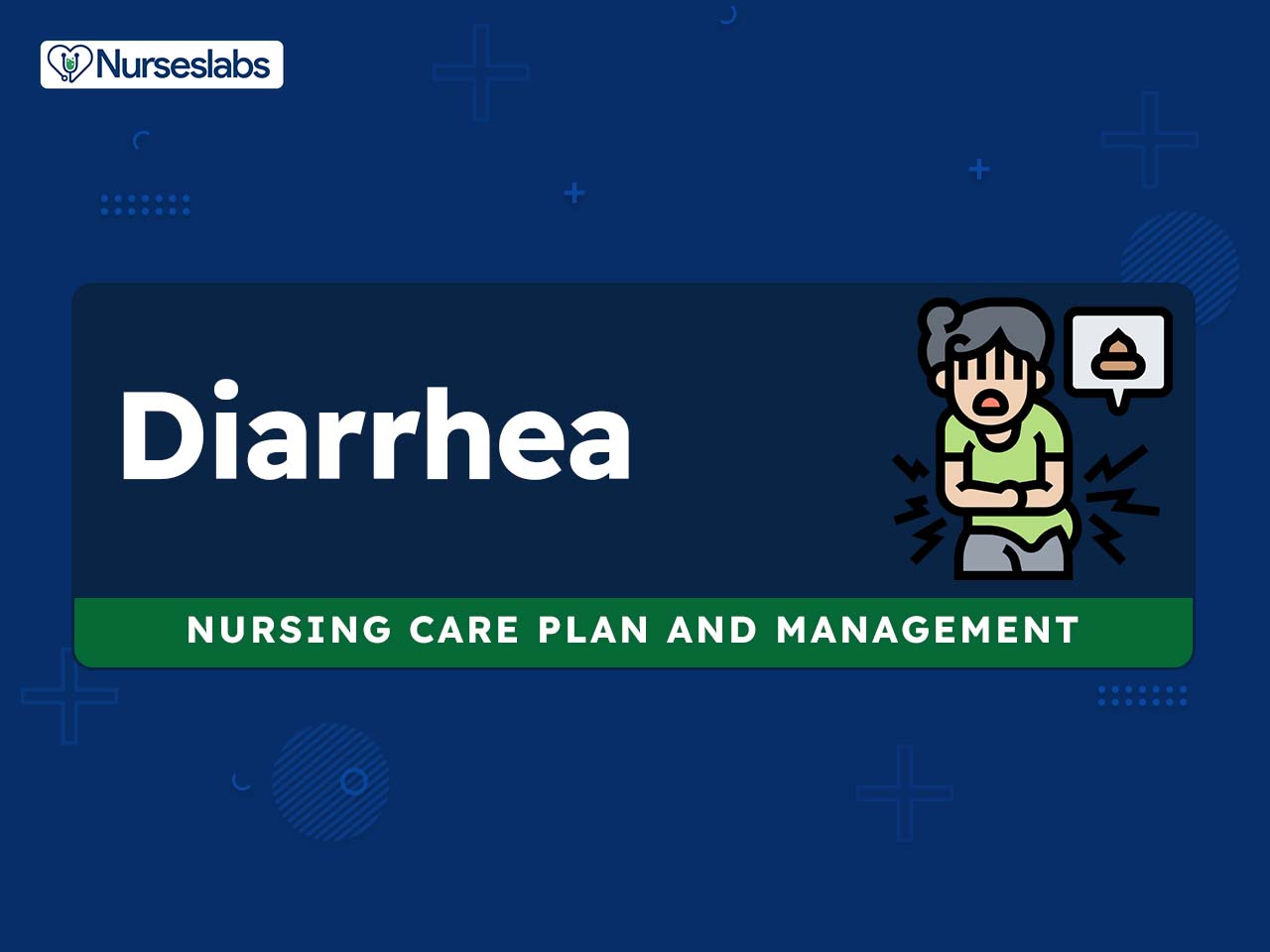

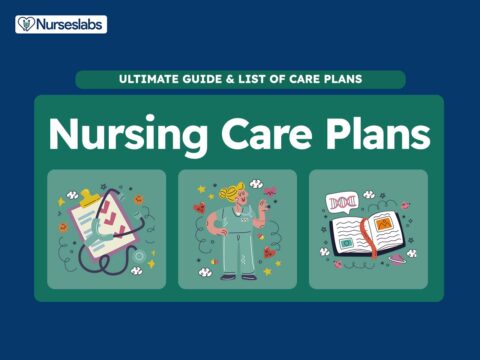








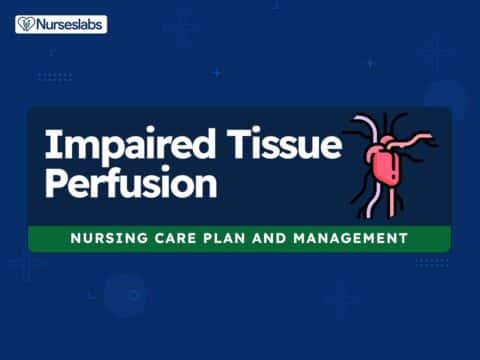

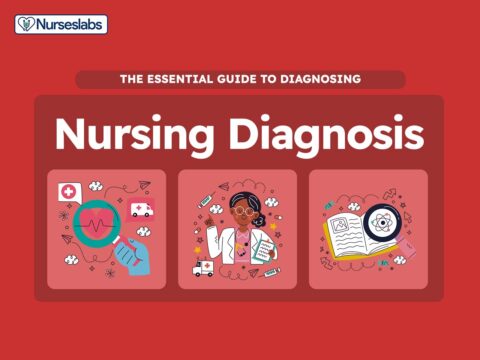


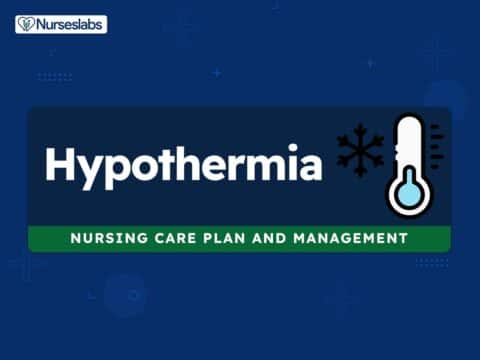






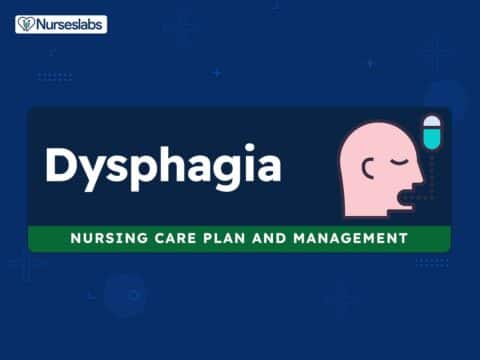











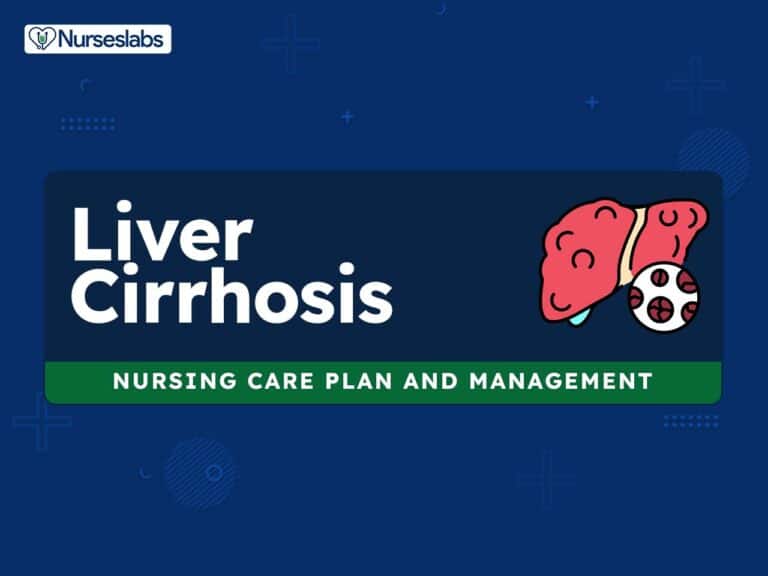

Leave a Comment